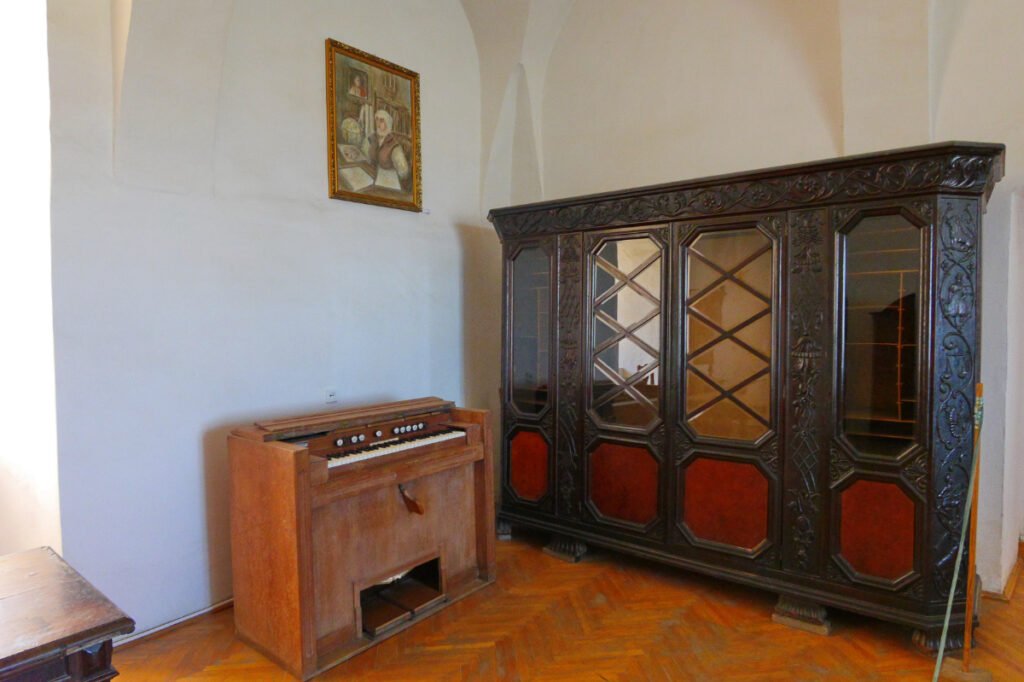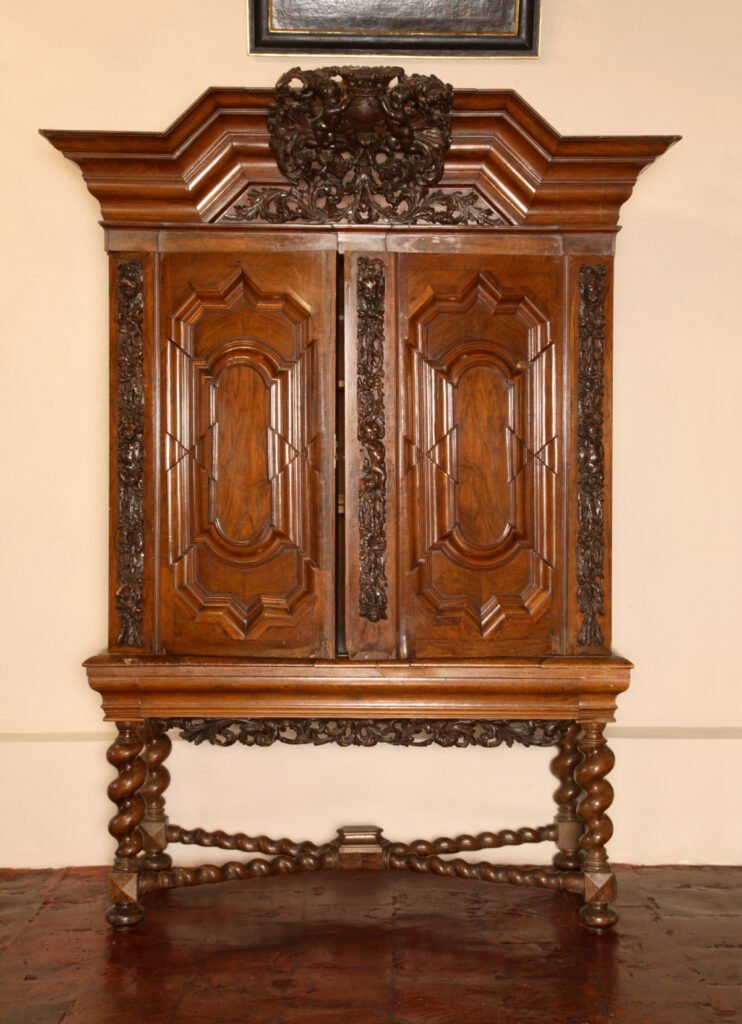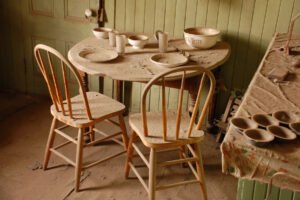In the 1600s, antique armoires were seen as a symbol of riches and prestige. Stylish and carved, these armoires sported huge racks, mirrors glued joints, and interesting inlays and marks, affecting their demand and value drastically.
In fact, special aged features like these are what make antique armoires a precious collectible even today! If you want to value such old armoires, you don’t need expert help! All you need is this detailed antique armoire value guide that explains all such features for you!
Key Takeaways
- Old and stamped details, patent marks, logos, signs, and brand names will help you identify if your old armoire is antique or not!
- Vintage armoires with a hand-molded, cabinet-style, linen-press, or drawer-like (Chifferobe) structure are more precious, often valued up to $4,000.
- Apart from the regular wood and stained armoires, even brass, bronze, and glass armoires fetch up to $5000.
- Want a rare, expensive armoire? Look no further than the Louis XVI style, Michelangelo, or Maison Forest Armoires worth $180,000 or more.
Notable Features of an Antique Armoire Wardrobe

In simple terms, an armoire is a large clothes and souvenir wardrobe costing $500 – 6000. But if you want to know if yours is an antique and worth more, look for the following key features:
- Aged craftsmanship – misplaced screws, dovetail joints, and saw marks
- Colonial or Rococo carvings, inlays, and gilded edges
- Brass, Bronze or Iron hardware – handles, knobs, hinges, and keyholes
- Darkened wood and shrinkage splits or cracks
- 6 – 7 feet walls with tenon-mortise sections
Armoire’ is derived from a simple Latin word, ‘armarium,’ which means an enclosed space for storing clothes and tools.
Evolution and History Of Old Armoires
Did you know that medieval Europeans stored their goods in trunks and camphor chests? However, because there were no dedicated racks for clothes or tools, the French artisans collaborated to design a large storage unit, the armoire, in the early 1600s! It had chiseled edges, two to three doors, and carved Baroque or meshed inlays.
Then, by the 1800s, makers worked on aesthetics! Some used the trendy Victorian or Rococo inlays, while others stuck to geometric patterns. And that’s how we got different armoire brands, each with different furniture legs, doors, and marks that affect the final value.
Then, during the Industrial Revolution, makers moved to standard, mass-produced armoires, each with mechanized, curved edges and minimal patterns. Though sleek and portable, these new armoires have a lower value due to their common designs.
8 Types of Old Armoires Based on Their Structure & Base Values

While there are hundreds of antique armoires available worldwide, you can sort and estimate their base prices based on the following types:
| Antique Armoire Types | Years | Top Identifying Features | Estimated Value |
| Wardrobe Armoires | Early 1650s | Solid cabinet-style wardrobes with two to three doors, full-length shelves, brass hardware, and Gothic inlays | $600 – 9,500 |
| Bonnetiere Armoires | 1700 – 1800s | Full-length, single-door armoires with light wood or metal accents, mirrors, shelves, hanging rods, and extra internal drawers | $500 – 5,000 |
| Linen Press Wardrobes | 1700 – 1800s | Sleek, deep drawer armoires with horizontal shelves for storing folded linens, bedsheets, towels & curtains | $1,000 – 7,000 |
| Display Armoires | 1850s | Small, glass-paneled armoires for displaying souvenirs, vases & trophies, often with backlit or mirrored surfaces | $300 – 4,000 |
| Rollup Armoires | 1800 – 1900s | Small, portable wardrobes with a built-in rolling door, canvas or vinyl shelves & ventilating holes | $400 – 3,000 |
| Computer Armoires | 1900s | Computer-desk-like wardrobes with in-built electronic spaces, wire cuts, lights & ventilation holes | $300 – 2,500 |
| Chifferobes | 1900 – 1950s | A multi-level unit of cupboard space, drawers & deep storage boxes for clothes & linen | $700 – 4,000 |
| Portable & Travel Armoires | 1920s & Onwards | Lightweight, foldable armoires with reinforced metal or vinyl sides, padded handles & built-in mirrors | $100 – 1,200 |
6 Simple Steps to Identify and Value Your Old Armoire
Now let’s check how different factors like age, colors, and materials help you value your old armoire for apt returns:
1. Trace the Armoire’s Manufacturing Date & Patent Numbers

If you want to verify whether your old armoire is antique or not, you must know its age! Well, technically, only the 70 – 100-year-old armoires are true antiques. But even the vintage ones fetch a good value if they have a stamped patent number on these areas:
- Inner walls and surfaces of the racks, shelves, and drawers
- Patent labels or stickers on the back panel
- Embossed marks on the hardware – handles, hinges, and locks
- Baseplate and moldings
But if your old armoire is missing these numbers, here are some appraisal tips based on its age and era:
| Antique Armoire Era | Age | How to Identify Them? | Average Value |
| 1600s | 373 – 423 years | Local wood – Mahogany and oak wardrobes with dovetail joints, full-length shelves, and hand-applied wax or shellac finishes | $1,000 – 18,000, as per the condition |
| Renaissance (1650s) | 324 – 373 years | Medium-sized, cabinet-style armoires with superior brass hinges, locks, tenon mortise joints & classical art inlays | $600 – 12,000 |
| Baroque (1700s) | 273 – 323 years | Curved & veneered armoires with outward legs, pads, imposed mirrors, glass inlays & animal or mythological carvings | $900 – 8,000 |
| Georgian Era (1750s) | 224 – 273 years | Straight & symmetrical wardrobes with tapered legs, moldings, curved edges & brass hardware or locks | $500 – 6,000 |
| Victorian Period (1800s) | 124 – 223 years | Exotic Walnut or Rosewood or brass cabinets with brushed gold or silver edges, animal & figurine inlays, glass inlays, and unique maker marks like stamps, printed labels, or metal tags (Pat. 1 – 616,871) | $300 – 4,000 |
| Minimalism (1900s & Above) | 73 – 123 years | New-age metal or glass armoires with multiple shelves, drawers, mirrors, backlights, soft-close hinges, wire cuts & ventilation holes (Pat. 640,167 – 3,551,908) | $100 – 2,000 |
Avoid getting armoires with high-gloss finishes, lights, and hanging rails, as those might be new & cheaper.
2. Examine Its Materials

In the early 1600s, French artisans used local Oak, Walnut, and Mahogany wood to craft the armoires. However, since they were heavy and prone to warping, makers shifted to brass and bronze by the 1700s. And then, in the Industrial Age, lightweight glass and melamine followed!
Here’s a table to know the value of such old armoire materials.
| Old Armoire Materials | Unique Features | Average Price |
| Solid Wood – Oak, Walnut, Mahogany, Pine, Beech & Chestnut | Linear or curved sections, visible wood grain, warmer colors & grooved or chiseled finishes | $1,000 – 18,000 |
| Brass & Bronze | Pastel yellow wardrobes with hammered or satin-like finishes, thin sections & linear profiles | $900 – 12,000 |
| Leather & Fabrics | Natural brown or tan furniture with smooth & supple texture and wooden frames | $500 – 3,500 |
| Clear & Stained Glass | Clear or translucent surfaces with smooth, polished, tempered, or frosted finishes | $300 – 5,000 |
| Melamine & Resin | Opaque & Flexible furniture with printed colors, patterns, and paper labels | $100 – 2,000 |
Try to get antique armoires with shellac, wax, lacquer, or ebonized finishes for good returns.
3. Observe the Styles

Do you know antique armoires from different eras and regions have different styles? For instance, the old 1600s European cupboards used Gothic inlays, while America tried Georgian designs. By the 1920s, makers used trendy Art Deco and minimal armoires!
And here’s how to identify and value these armoire styles:
| Antique Armoire Styles | How to Identify Them? | Estimated Price |
| Gothic & Colonial | Bare wood or greenish furniture with carved wheels, roses, and tapestry patterns | $1,000 – 18,000 |
| Renaissance Style | Geometric or fluid armoire with carved moldings, lion heads, frames & natural themes | $1,200 – 12,000 |
| Baroque & Louis XV | Twisted columns & bases with whimsical flowers, leaves, cherubs & symmetrical motifs | $750 – 14,000 |
| Rococo & Georgian | Classical armoires with large, imposing sections, symmetrical moldings & stained glass, or naturally carved inlays | $500 – 1,200 |
| Victorian | Dark wood – Mahogany and walnut profiles with intricately carved meshed and scrollwork designs and mirrors | $2,000 – 12,000 |
| Contemporary & Art Deco | Geometric & curved furniture with metallic finishes, lacquers & chrome accents | $300 – 6,000 |
| French & French Country | Curved, country-side designs with open panels, glasswork, and a few natural moldings | $950 – 15,000 |
| Traditional & Retro | Vibrant & bold-colored furniture with curvilinear profiles, metal accents & contrasting hardware | $500 – 4,000 |
4. Check the Brand/Manufacturer

Among all the different types of old armoires, the branded ones fetch the highest value of up to $20,000. So, to verify if your armoire is branded, check if it has any maker stamps or labels on the base or sides.
If yes, note the brand name and verify its features and values from our table below:
| Old Armoire Brands | Collectible Features | Average Cost |
| Chippendale Furniture | Look for arched tops, s-shaped scrolls, cabriole or ball & claw legs, tapering feet and mahogany profiles | $1,800 – 14,000 |
| Hepplewhite Armoires | Etched shell or bellflower marks on the back panel | $3,000 – 19,000 |
| Stickley | An etched or printed, red-colored compass-like mark on the metal tags, labels or decals | $3,000 – 16,000 |
| Baker Furniture | Original cursive ‘Baker’s’ sign on the drawers, bases or back panels | $2,000 – 12,000 |
| Howard Miller | Foiled labels or metal tags with the brand’s name on the base plate | $2,000 – 10,000 |
Pick antique armoires with French, Italian, Asian, or American make for a good value.
5. Observe the Colors and Wood Finishes
Most of the old armoires had bare wood or brass sides. But then, by the 1800s, makers added black, red, blue, and green painted or pigmented cupboards, too! So, let’s check how each of these colors affects an armoire’s final resale cost:
| Vintage Armoire Colors | Estimated Price |
| Brown & Beige | $1,000 – 9,500 |
| Black, White & Gray | $800 – 6,500 |
| Blue & Green | $500 – 2,500 |
| Red & Orange | $300 – 2,000 |
6. Count the Number of Doors
When appraising an old armoire, follow this simple rule – the fewer the doors, the more the resale value! It’s so that the old, handmade armoires had only one or two hinged or glued doors.
However, by the 1900s, makers used machines to add more doors and shelves. Also, these had new screwed, bolted, or welded joints instead of glue!
Top 5 Most Expensive Armoires to Find Now!
Now, let’s discuss the top five rarest and most expensive armoires, with their features, details, and auction values as per recent sales:
| Rare and Valuable Armoires | Unique Features | Last Resale Value |
| Michelangelo Guggenheim & Pauly Cie Et Venice Antique Carved Armoire | CIE stamps, Victorian designs, and an original Michelangelo Guggenheim make | $320,433 |
| Regulator-Wardrobe by Maison Forest | Rare, Louis XV-style armoire with decorated roses, wreaths, ribbons, and gilt bronze claw feet | $308,304 |
| Louis XVI Style Marquetry Armoire | Large, palace-style armoire with engraved rosettes, birds, darts, lions, masks and ball feet | $180,000 |
| School of Hugues Sambin Armoire | Renaissance-style wardrobe with its original leaflets, trademarks and etched figures, fruit or flower patterns | $165,163 |
| Ormolu Armoire | Transitional, French-style armoire with scrolled foliage designs, bows, arrows, wreaths & shiny gold accents | $68,500 |
What Was the Original Use of an Armoire?
Old armoires were used as extra storage for clothes, tools, weapons & artillery stuff.
How Much Does an Old, Solid Wood Armoire Weigh?
Old, 24” deep solid wood armoires typically weigh about 250 – 300 lbs, depending on the number of doors, drawers & other hardware.
If you love collecting vintage armoires and wardrobes, this guide is a lifesaver! Not only will it help you identify the different marks and brand logos, but it will also estimate the prices to save you from the tiresome market research! So, just grab a magnifying glass and get set!
And if you want to spruce up more vintage furniture, head on to my detailed guides on ‘old sofas,’ ‘antique chairs,’ ‘Windsor chairs,’ and ‘dresser styles’ to learn their values!
Note: This article is intended for informational, educational, and entertainment purposes only. Some images are illustrative and may not represent actual brands, products, or related entities. All trademarks, product names, brand logos, packaging, and other intellectual property referenced remain the exclusive property of their respective owners. Any brand mentions or references are provided solely for descriptive and educational context and do not imply any formal or commercial association.










